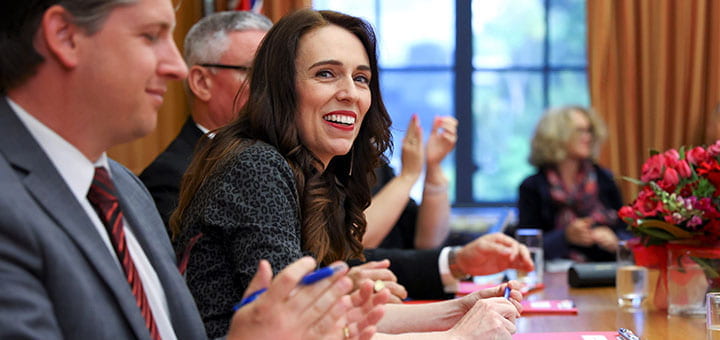A Women’s Leadership Movement?
Recent media stories about how strong female leaders are succeeding through the pandemic crisis have created a movement of reevaluating what a strong leader looks like and of taking a long, hard look at gender equity.
Prime Minister Jacinda Ardern of New Zealand has been praised for her leadership style during the pandemic. Germany, led by Angela Merkel, has had a far lower death rate than Britain, France, Italy or Spain. Finland, where Prime minister Sanna Marin, 34, governs with a coalition of four female-led parties, has had fewer than 10 percent as many deaths as nearby Sweden. And Tsai Ing-wen, the president of Taiwan, has presided over one of the most successful efforts in the world at containing the virus, using testing, contact tracing and isolation measures to control infections without a full national lockdown.
These are exceptional leaders leading in exceptional times. Still, their individual strengths have been noticed and applauded, particularly their humanity. They are more interested in increasing group welfare than individual showmanship. This talented group of female leaders has become the first visible wave of role models, encouraging an overthrow of the old, obsolete leadership archetype for a more pragmatic and meritocratic one.
Many organizations are lulled by a false sense of progress, pointing to diversity and inclusion training, focused recruitment efforts, unconscious bias training and individual development programs for women. But the fact of the matter remains. Most workplaces were created by men and for men, creating numerous challenges for women to overcome.
Change requires leadership. A leader sets the standard for behaviors in an organization. They decide what gets endorsed, supported, overlooked and rewarded. A “policy” or “training program” can’t compensate for a leader who consistently ignores or even endorses behaviors, such as comments or jokes, that discriminate, marginalize and exclude women.
The call for leaders to advance gender equality at work, regardless of whether they lead a startup, multinational, or public-sector organization, is in reality an invitation for them to lead.
Gender equity and leadership was the topic of the Women Business Collaborative CEO Roundtable with four women executives representing diverse industries. They represented nonprofit, corporate, government and entrepreneurs.
The CEOs had much insight to share, including a recurring conviction, best expressed by Stacey D. Stewart, President and CEO March of Dimes, that their organizations must reflect those they aim to serve. “If our organization doesn’t look like those who we are serving or deliver on the vision we strive to meet every day, we are letting people down.”
According to the 2019 U.S. Census, women represented the majority of prime working adults at 50.8%. Yet they represent less than 10% of Fortune 500 CEOs. The women’s leadership movement has a long way to go, ensuring businesses, governments and other organizations are truly reflecting the constituents they purport to serve.
*
Women can signal their readiness for increased responsibility by adding a credential to their resume. Our Supervisory Leadership Certificate Program includes a diverse course curriculum that not only includes a core course “Development Yourself and Others” but also covers other critical topics like “Coaching for Performance,” “Change Management,” “Supervision and Human Resource Functions,” “Interpersonal Communication,” “Helping Your Team Achieve Organizational Management,” along with a Capstone Course that integrates all the learning and knowledge. Now enrolling for the spring session, starting in February.
*
RESOURCES:
Forbes. “Women CEOs Discuss Gender Equity and Leadership,” Robert Reiss, December 10, 2020.
Harvard Business Review. “Leaders, Stop Denying the Gender Inequity in Your Organization,” Michelle King, June 19, 2020.
Harvard Business Review. “Will the Pandemic Reshape Notions of Female Leadership?” Tomas Chamorro-Premuzic and Avivah Wittenberg-Cox, June 26, 2020,
New York Times. “Why are Women-Led Nations Doing Better with Covid-19?” Amanda Taub, May 15, 2020

